(Updated)
Ford Motor Co.’s new CEO Jim Hackett emerged from a 100-day review of the company’s challenges, capabilities and strategies late Tuesday afternoon to reveal a series of changes expected to yield billions of dollars in savings for the second-largest U.S. automaker while also driving up sales, revenues and margins by targeting new business opportunities in both the U.S. and overseas markets.
The former head of furniture maker Steelcase, Hackett said Ford has to prepare for the disruptions threatening the auto industry while using them to boost revenues. Joined at Ford headquarters in the Detroit suburbs by four of his top lieutenants, Hackett outlined a series of key goals and changes that will include, among other things a reduction in the number of sedans and conventional passenger cars while shifting capital to the development of more utility vehicles and electrified vehicles.
Improvements in the product development and manufacturing process, meanwhile, will yield about $10 billion annual savings, said the 62-year-old Hackett. Acknowledging Ford had “fallen short on key targets,” the new CEO promised to deliver profit margins of at least 8%, up from the current 6.1%, a figure he said “simply (is) not good enough.”
(Ford planning temporary shutdowns at five North American plants. For the story, Click Here.)
Hackett, who had been serving on Ford’s board of directors and overseeing some of its key advance vehicle programs, was elevated to chairman this past May following the sudden ouster of Mark Fields. The former CEO had come under fire for missing some of those financial targets – even though Ford had delivered its best-ever annual earnings under his rein.
But critics also felt Ford was losing sight of its core business even as it began moving into new areas of business, ranging from electrified drivelines to autonomous and connected vehicles.
While Hackett made it clear Ford intends to accelerate those new lines of business, he stressed that it plans to remain “in the car business, moving goods and people around. Some about us not being in the car business (going forward) is gone.”
What likely will be gone are some of Ford’s slower-selling passenger car models, Hackett and his lieutenants emphasized during a lengthy meeting with analysts and the media.
“We are shifting funds from cars to trucks,” he explained, “and not worrying about fuel (prices) impacting that move because of the way we’re thinking about propulsion.”
Ford will try to focus on targeting the specific needs of key markets as it adds more utility vehicles, explained Jim Farley, Ford’s director of Global Markets:
- For the U.S. there will be more products with serious on and off-road capabilities, such as the reborn Bronco due to market in 2020;
- For Europe, customers will see more compact crossovers designed for urban living;
- Chinese buyers will see both compact utes – the market’s fastest-growing segment – as well as more high-line, three-row models.
While those may seem to be very different sorts of products, a key goal for Hackett’s team will be commonizing more of the underlying platforms and components while reducing the number of “top hats,” or bodies.
Ford also plans to reduce the number of standalone options that buyers will be offered, a step aimed at further reducing both assembly line complexity and consumer choice.
All told, said Joe Hinrichs, head of Ford’s Global Operations, that should add up to about $10 billion in annual manufacturing efficiencies, while also delivering to the market products Ford believes it will be able to sell at higher price levels.
(Ford’s newest Super Duty model nudges the $100,000 mark. Click Here for the story.)
The real payoff will take several years, Hinrichs stressed, as Ford prepares to launch a historic level of new products towards the end of the decade.
A growing number of those will be offered with various forms of electrified powertrains, including conventional hybrids, plug-ins and pure battery-electric vehicles, or BEVs, Ford officials explained. But they avoided making the broad sort of commitment that many of its competitors have made in recent months.
Just a day earlier, General Motors’ product development chief Mark Reuss said the automaker plans to migrate completely to BEVs, with two new models due within 18 months and “at least 20” in its portfolio by 2023. Volkswagen, meanwhile, announced last month it would invest $20 billion to offer at least one electrified powertrain option for every model sold by its dozen passenger vehicle brands.
During a lengthy Q&A session, Farley made it clear that not all Ford models will electrify, suggesting the carmaker will look for product segments where it has a solid position, such as its commercial vehicles. That, said Farley, “is a natural fit for us as we expand the EV business going forward.”
Under former CEO Fields, Ford put a heavy emphasis on smart vehicle technologies, including connected and both autonomous and fully driverless vehicles. Those will remain key programs aimed at managing the disruptions Hackett and his team anticipate. Because of the high energy demands from the onboard sensing and computing systems on self-driving vehicles, Farley said he expects that they won’t go fully electric, at least not using today’s batteries. Instead, they will likely opt for more conventional hybrid drivetrains.
Hackett, meanwhile, said Ford will move away from offering unique products in the electrified market, such as its C-Max. He said customers no longer want unique products that look like they were designed to be “science projects.”
One of the biggest uncertainties concerns the role of ride-sharing. When it announced plans to develop a completely driverless vehicle last year, Ford said it would target fleets, including ride-sharing companies. Just last month it announced plans to put those vehicles into the field through Lyft, the country’s second-largest ride-sharing company.
A number of recent studies have suggested that anywhere from a third to as much as 90% of the miles Americans clock on the road will be in vehicles operated by ride-sharing services by 2030. For his part, Farley said that raises significant questions about some basic premises of the auto industry, including who will buy and own tomorrow’s vehicles.
Autonomous and connected vehicles also raise the opportunity to create new business models, Ford officials said Tuesday, such as providing content to passengers.
For CEO Hackett a key challenge for Ford will be to focus on both day-to-day issues, as well as managing the various new technologies and services that are coming, something he called the “near, now and far horizon.”
(U.S. car sales rebound in Sept., but Ford falls behind Toyota. Click Here for the story.)

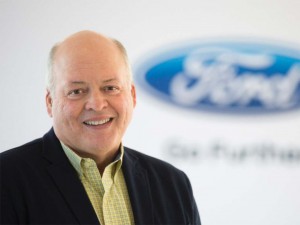
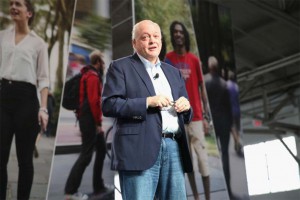
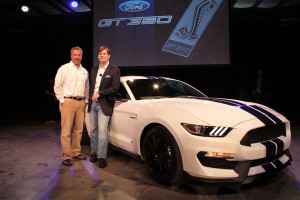
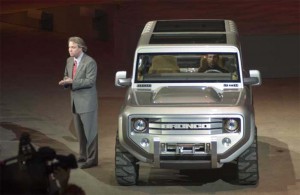
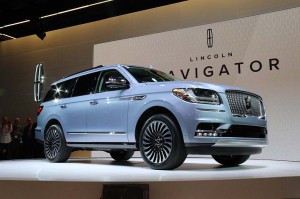
As usual, the 5 year plan changes after every monthly sales report.